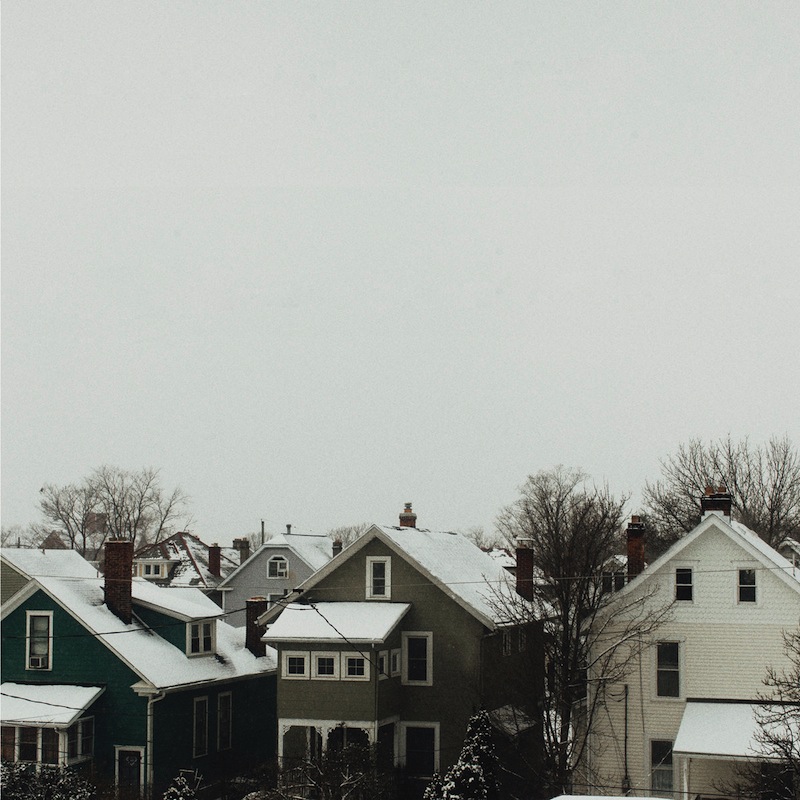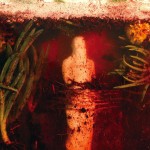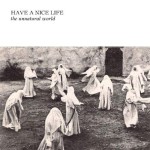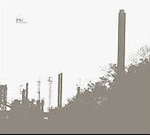Planning For Burial : Below the House

Artfully produced, savagely intimate and hidden behind fiercely cold layers of gloom which seek to extinguish any warmth or brightness throughout, Planning For Burial‘s Below the House is an immensely powerful work. It’s also far from the first Planning For Burial album to strike such a chord. It’d be an understatement to describe Thom Wasluck’s catalog of work under the stage name of Planning for a Burial as prolific. Since 2005, Wasluck has been developing equal parts soothing and punishing experiments of black metal, shoegaze and ambient sounds. Through this dichotomy of loud and soft, Wasluck in recent outings has sought to refine this sound, and Below the House marks a transition point.
“Somewhere in the Evening” is a steadfast example of this transitional sound, featuring electronics that scorch the entire composition with exaggerated pitch, while a piano reins in the scattering sound to a more linear direction, and a swelling march begins to take form. The aural soundscape consists of mountains of twisting guitars and concussive percussion, all progressing toward a beautiful spire of hypnotic noise. It would be easy to label this blackgaze and walk away from it, but it’s also over-simplifying something that really exists outside the necessity of strict genre adherence. The distinct warmth that comes with blackgaze isn’t found here. Instead, what Wasluck’s constructing in terms of gauging the temperature of sound is something much closer to emaciated sunlight. This is a warmth that will haunt you.
There’s a similar fondness for the ambient aspects of Planning for a Burial that aren’t buried by the more accessible and heavier tracks. “Past Lives” and “(something)” both use abrasive belts of extreme noise that punctuate a quiet soundscape of mounting dread. However, they both flirt with melancholy, with “(something)” in particular featuring a subdued bass with accentuated notes plucked over a haunting sea of hungry reverb.
The last four tracks of Below the House feature some of the album’s most powerful sound. At the same time they feature some of the most revealing as well. Constantly, Wasluck plays with this duality and in doing so constructs a much more cohesively thematic soundscape for the listener. “Dull Knife”—parts 1 and 2—acts as proof of concept for the album as a whole, with the second installment’s length being used to excellent effect, molding dreamy and grim progressions alongside Wasluck’s tender vocals.
The title track begins with a plumbing bass, a whisper of Wasluck’s vocals through a gritty tunnel alongside a shimmering rhythm that maintains its immediacy. It’s a powerful gloom-laden reflection to end the album on, a cold and distant track that stays away from any manifestation of reverb assaults or escalating intensity and instead like a dimming light, just sort of phased out.
Overall, there’s an increase of sophistication throughout Below the House. While the album lacks distinctly cohesive themes and progression, the tracks here, on an individual level, display a merit of their own that is both direct and refreshing. Below the House, through thoughtful composition and Wasluck’s vocals, shows that within the boundaries of extremes there still exists a need through refinement to create accessibility while maintaining the benefits of dynamic experimentation.
Similar Albums:
 Wreck and Reference – Indifferent Rivers Romance End
Wreck and Reference – Indifferent Rivers Romance End
 Have a Nice Life – The Unnatural World
Have a Nice Life – The Unnatural World
 Jesu – Conqueror
Jesu – Conqueror

